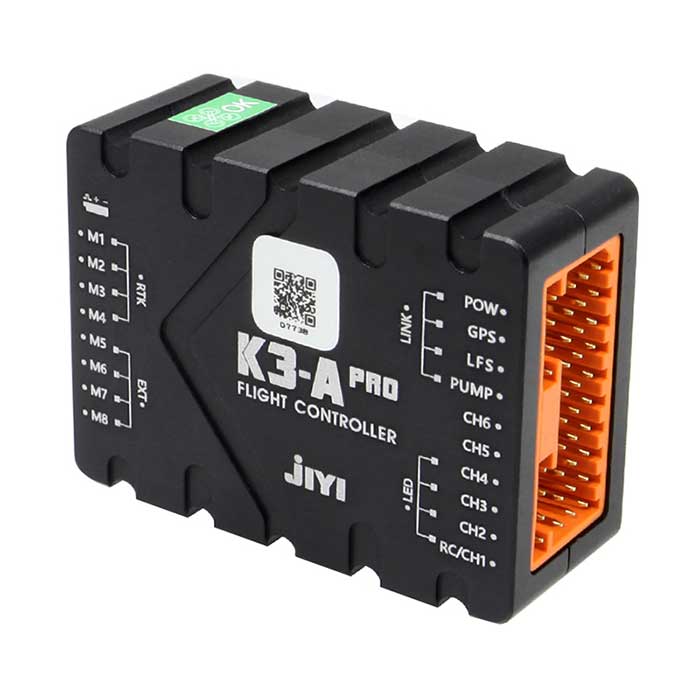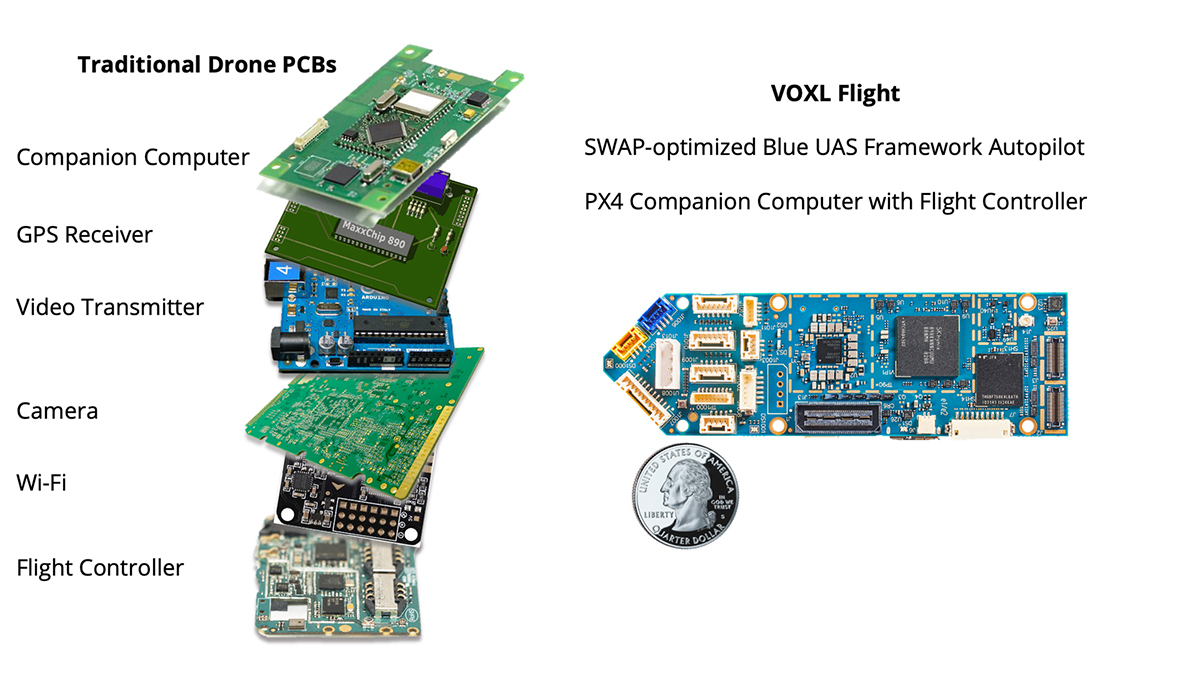SparkNavi Drone Flight Controller and GNSS/INS Made in Taiwan: Accuracy Navigation for Drones
SparkNavi Drone Flight Controller and GNSS/INS Made in Taiwan: Accuracy Navigation for Drones
Blog Article
Discovering the Role of Drone Flight Controllers in Enhancing Flight Security and Navigation Effectiveness
The advancement of drone modern technology has actually dramatically raised the relevance of flight controllers, which offer as the brain of these aerial lorries. By incorporating real-time information from a variety of sensing units, trip controllers boost flight stability and navigation efficiency, making sure that drones can run efficiently also in complex environments.

Understanding Trip Controllers
Flight controllers are integral components in the functioning of drones, serving as the brains that support and manage trip procedures. These innovative devices procedure information from various sensing units, consisting of accelerometers, gyroscopes, and GPS, to ensure that the drone preserves its designated flight path. The trip controller translates this information and performs commands based on pre-defined formulas, enabling the drone to react to ecological adjustments, such as wind or obstacles.
The main feature of a trip controller is to maintain stability during flight. It attains this by making real-time modifications to the drone's electric motors and control surface areas, making sure balance and control. Additionally, contemporary trip controllers include innovative attributes such as waypoint navigating, enabling automated flight paths and boosted operational effectiveness.
Understanding the design of flight controllers is critical for both hobbyists and professionals. They normally include a microcontroller, firmware, and numerous user interfaces for sensor input and communication. As technology advances, flight controllers have become extra small and capable, incorporating expert system to enhance decision-making processes and adjust to intricate trip circumstances. This development symbolizes an essential development in the drone market, leading the way for more sophisticated applications and more secure operations.
Key Components of Trip Security
Achieving ideal trip stability in drones depends on several key parts that operate in concert to make certain smooth and controlled operations. Central to this security is the flight controller itself, which processes information from different sensing units to preserve the preferred trip mindset. This consists of accelerometers and gyroscopes that measure movement and alignment, enabling real-time changes to the drone's position.
An additional important part is the electronic rate controllers (ESCs), which manage the power supplied to the motors. By carefully adjusting motor rates in action to flight controller commands, ESCs help maintain balance and neutralize disruptions triggered by wind or sudden motions.
In addition, the style of the drone's framework plays a critical function in trip security. A well-structured structure reduces resonances and improves the total wind resistant profile, contributing to smoother trip attributes. The integration of advanced algorithms within the flight controller help in predictive modifications, making sure a responsive and adaptable flight experience.
With each other, these parts develop a cohesive system that boosts a drone's security, enabling for accurate maneuvering and improved efficiency in various trip problems.
Navigation Effectiveness Methods
Performance in navigation is vital for maximizing drone procedures, specifically in complex environments. Efficient navigating techniques improve the capability of drones to traverse challenging terrains and avoid challenges, thus boosting operational performance and safety and security.
One famous strategy is the application of sophisticated general practitioners and inertial dimension devices (IMUs) that give exact place monitoring and alignment information. These innovations enable drones to determine optimal trip courses in real-time, thinking about various variables such as wind conditions and prospective obstacles.
Another strategy entails the usage of formulas for path planning and optimization. Algorithms such as A * find out this here and Dijkstra's algorithm can be released to identify one of the most effective course while decreasing power intake and trip time. Additionally, integrating machine learning designs can make it possible for drones to adaptively gain from their environments, improving navigation capabilities through experience.

Influence On Autonomous Drones
The integration of sophisticated navigating strategies has actually greatly changed the abilities of independent drones, allowing them to run with better freedom and precision. SparkNavi drone flight controller and GNSS/INS made in taiwan. These enhancements are primarily associated to sophisticated trip controllers that utilize real-time information handling and sensing unit combination, allowing drones to browse complex atmospheres seamlessly
The effect on self-governing drones prolongs past mere navigation; it incorporates boosted obstacle avoidance, enhanced stability throughout dynamic problems, and raised goal integrity. By leveraging algorithms that incorporate equipment discovering and fabricated knowledge, drones can adapt to altering circumstances, making notified choices that enhance their trip courses while minimizing risks.
Moreover, the application of robust trip controllers has promoted the execution of complicated jobs, such as airborne inspections, delivery services, and farming surveillance, with marginal human intervention. This capacity not only streamlines procedures but also lowers human mistake, consequently boosting total safety.
As a result, the operational extent of independent drones has broadened significantly, making them essential devices in various sectors. Their capability to perform effectively in diverse situations emphasizes the important role that progressed trip controllers play in shaping the future of unmanned aerial systems.
Future Fads in Trip Control
Regularly, advancements in flight control innovation are poised to redefine the landscape of drone operations in the coming years. Arising fads show a considerable change in the direction of enhanced expert system (AI) assimilation, making it possible for trip controllers to refine real-time information much more efficiently. This development will certainly facilitate better decision-making abilities, permitting drones to adjust to vibrant ecological problems autonomously.
In addition, the execution of artificial intelligence algorithms is anticipated to enhance anticipating maintenance, thereby reducing downtime and prolonging the lifecycle of drone parts. This proactive strategy to maintenance will be vital as drone applications expand throughout numerous sectors, from agriculture to logistics.

.jpg)
Finally, improvements in secure communication protocols will resolve safety and regulatory this link concerns, making certain that drones can run seamlessly in busy airspaces (SparkNavi drone flight controller and GNSS/INS made in taiwan). Jointly, these patterns direct towards a future where trip control systems are not only smarter and extra also capable yet effective of running safely in a progressively incorporated airspace
Conclusion
To conclude, drone flight controllers are integral to enhancing flight stability and navigating effectiveness via the innovative processing of sensing unit data. By keeping optimal flight attitudes and using sophisticated algorithms for course optimization and obstacle evasion, these controllers considerably add to the autonomy and operational safety of drones. As technology remains to advance, even more innovations in trip control systems are prepared for, promising improved performance and increased capabilities in the realm of unmanned aerial cars.
By incorporating real-time information from a range of sensing units, flight controllers boost flight stability and navigation effectiveness, making certain that drones can operate efficiently also in intricate atmospheres.Trip controllers are important parts in the performance of drones, serving as the brains that support and handle trip procedures. Additionally, modern-day flight controllers include sophisticated features such as waypoint navigation, allowing for automated flight paths and boosted functional efficiency.
Central to this stability is the trip controller itself, which processes data from various sensing units to preserve the preferred flight mindset.In verdict, drone trip controllers are important to enhancing trip stability and navigating performance through the sophisticated processing of sensor data.
Report this page